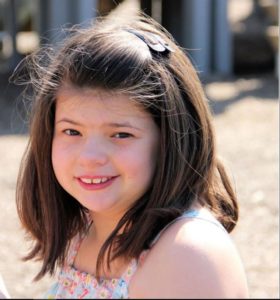
Developmental delay affects 1-2% of children worldwide. Symptoms often associated with developmental delay include impaired cognition, failure to meet developmental milestones, craniofacial and skeletal abnormalities, autism, and seizures. These disabilities can pose major medical, financial and psychological challenges.
Specific diagnoses for children with developmental delay are in many cases elusive, and the lack of a diagnosis is a major hardship for patients and their families. Inaccurate or unavailable diagnoses can result in years of expensive, invasive, and futile testing that complicates treatment decisions and may also lead to anxiety and emotional distress. Moreover, not knowing the reason for specific developmental delays slows research into improving therapeutic or educational options.

In an effort to end the diagnostic odyssey for children with developmental delay, we have employed large-scale DNA sequencing to identify specific genetic variants that are causally relevant to developmental disabilities. As part of the NHGRI-funded Clinical Sequencing Exploratory Research Consortium, we began enrolling affected children into our study in 2013. Thus far, we have sequenced 371 children who present with developmental delay, and we have found the genetic cause – and thus contributed to more precise and definitive clinical diagnoses – in 27%.
We also enrolled biological parents when available to facilitate the identification of “de novo” – i.e., present in a child but absent from his/her parents – genetic variants, as these are known to be enriched among variants that cause developmental disabilities.
By sequencing the affected child and their parents, we were able in many cases to more efficiently identify the pathogenic variant relevant to their symptoms. In addition, by efficiently revealing relatively short lists of candidate de novo variants, trio sequencing also can greatly improve discovery of novel disease contributions.
That said, through retrospective analysis of proband genetic variants in the absence of parental sequence information, we were able to show that completing sequencing for only the child will often still yield a diagnosis, but will on average require more time and analytical effort when compared to the analysis of a trio.
Reanalysis success is driven by, and dependent upon, data sharing by clinicians and scientists who are also sequencing developmentally delayed patients.
Through our study, we observed that finding a pathogenic variant in an affected child is more challenging when close relatives have a neurological condition. This finding suggests that the underlying genetics in such “multiplex” families are more complex and harder to interpret than in “simplex” families, and that this distinction influences the success rate in terms of pathogenic variant discovery.
We also demonstrate that reanalysis over time of data from affected children with no initially identified causal genetic finding will often lead to new findings that considerably improve overall yield. Reanalysis success is driven by, and dependent upon, data sharing by clinicians and scientists who are also sequencing developmentally delayed patients.
Our data underscore the value of whole genome sequencing as an effective first-choice diagnostic tool in patients with developmental disabilities. Further, such sequencing, especially as proband-parent trios, will advance clinical and research progress and reduce the number and length of diagnostic odysseys that continue to impact numerous children and their families.
Comments